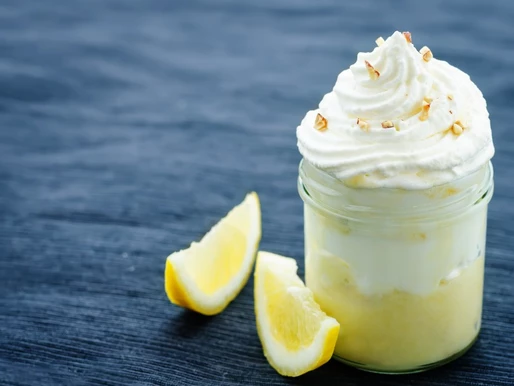When you're making your own whipped cream to use as a dessert topping, or perhaps as a frosting or for piping decorations, you're going to get the best results by whipping it and applying it right before you serve the dessert.
That's because cream expands when air is whipped into it and the air forms bubbles that are suspended in the cream. And after sitting for a while, this air starts to leak out and the whipped cream deflates. How long does this take? Whipped cream will hold for 2 to 3 hours in most cases, although this time is shortened in warmer weather.
The point is that unless you are making your topping more than a couple of hours ahead, you don't need to worry about your whipped cream deflating. Nor is it a concern if you're making whipped cream to use as a sauce or as a filling.
On the other hand, if your situation requires you to have to make your whipped cream in advance and hold it, or actually decorate your desserts with the whipped cream in advance, it is possible to stabilize whipped cream so that it won't deflate.
By the way, if you're concerned about your whipped cream holding its shape, the first thing to make sure of is that you are using heavy cream with a fat content of at least 40 percent. Also, extremely fresh cream is more difficult to whip. But you'll only notice a difference if your cream is less than a day old. In most cases, this won't be a factor.
The reason the temperature and the fat content of the cream are so important is that it's the fat globules in the cream that form the network which in turn hold the tiny air bubbles in place when you whip air into the cream. And because butterfat (i.e. the fat in cream) is solid at cool temperatures and liquid at warm temperatures, the cooler the cream is, the more solid the network of bubbles will be. When it gets warmer, the bubbles collapse and the air escapes, thus deflating your whipped cream.
Therefore, you will have the best results from high-fat heavy cream that has been chilled to 40 F or below. And it's not a bad idea to chill your bowl and the wire whip attachment you're using to whip the cream. Anything you can do to keep the cream cool will ultimately help stabilize whipped cream.
But sometimes these tips aren't enough, whether it's because it's a warm day or you're making your whipped cream a couple of hours or more ahead of time. In this case, you can add a stabilizing agent to your whipped cream to help it hold its peaks. And the stabilizing agent that works best is plain, unflavored gelatin.
Figure 10 grams of gelatin for every quart of heavy cream you're using. Start by softening the gelatin in 1/4 cup of cold water, then slowly warm it until the gelatin dissolves. Begin whipping the cream, as usual, making sure it's well chilled before you begin. When it starts to thicken, pour the liquefied gelatin into the cream while mixing at high speed. Continue to whip until the cream reaches the consistency you want.
Whipped cream stabilized with gelatin will hold its shape for up to 24 hours. The fact is that if you're piping decorations with whipped cream, it's not a bad idea to use the gelatin method anyway, regardless of temperature or other issues.
One thing to note is that gelatin is an animal-based product, so if you're serving your whipped cream to anyone who is a strict vegetarian, you might want to consider some vegetarian options instead of gelatin. They don't work as well, but they are arguably better than nothing.
In many cases, your whipped cream is going to be sweetened, which means you'll be adding sugar to it. We've discussed elsewhere how important it is to follow the recipe you're using, especially when it comes to baking and desserts. But if your whipped cream recipe calls for adding granulated sugar, you should substitute an equal weight of confectioners' (aka powdered) sugar.
The reason for this is twofold. One, granulated sugar is made of heavy crystals which can weigh down the peaks of your whipped cream, causing it to collapse. Powdered sugar will dissolve more easily. But also, powdered sugar contains up to 3 percent cornstarch to prevent it from clumping. And cornstarch also happens to be an excellent stabilizing agent. So use powdered sugar for sweetening your whipped cream.
And of course, you can certainly add cornstarch (or tapioca starch, or arrowroot, or agar, xantham gum, guar gum, or innumerable other thickeners or stabilizers) to your whipped cream. As a general rule, start with 1/4 teaspoon mixed directly into the cream as you whip it. Excess starch can cause the whipped cream to be too dense.

